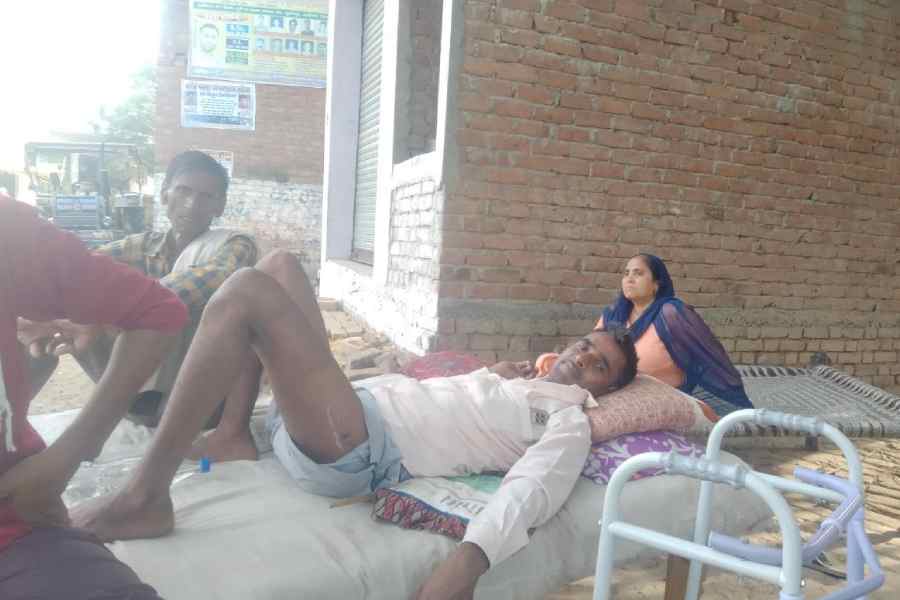When Shakeel, 35, decided to marry, he also decided to leave home. Not because his family would not accept his bride.
“I realised that I cannot marry if I stay on in this village without a proper source of income,” Shakeel, now an auto-rickshaw driver in Delhi, said.
He left Nagla Achal just before his marriage. “I went to Delhi, rented an auto-rickshaw and began working.”
At least 50 youths from this village of 250 families are migrant labourers in Delhi, Noida and Gurgaon, said another resident, Osman Khan, 40.
Khan sits on a cot for most of the day. He has a fractured leg and is hoping it will heal soon so he can resume working.
He is a migrant worker, too: he collects household scrap in Delhi and sells them to dealers, earning about Rs 15,000 a month.
Khan had slipped while pulling a trolley loaded with scrap. For the past one month, he has been staying in his village and receiving treatment at a local government hospital.
This story of migration is the same across villages in India’s heartland of Uttar Pradesh, an agrarian region with limited employment opportunities.
“In this area, there is no industry. Agriculture is the main occupation. Else, there is casual labour, which is not available every day. So any job anywhere in the country is a better option for the youths,” Khan said.
People mainly migrate to places where they have a social network. Many go with labour contractors, too.
In either case, they have to do very low-paid jobs, with neither job security nor social security in the form of health insurance or pension.
The migrants earn their living as construction labourers, roadside vendors, transport workers, security guards and farm labourers, among others.
A migrant moving out of the village earns about Rs 8,000 a month on an average, Khan said. He added that the rate of migration was lower among the forward castes.
In Sardar Nagar village in Aonla tehsil, Bareilly district, Munish Mansuri said that nearly 100 youths from the village of 500 families were working in the National Capital Region.
“The workers move out of their own accord; the government keeps no record. Nor does the government provide any help if anything happens to a worker,” Mansuri said.
“We appeal to the government to help us if we face an accident or any other emergency.”
Rohit Kumar Balmiki, a second-year B.Com student from Saifai village in Etawah district, said he might have to leave his village next year.
“My mother works as an attendant in the local hospital. She is the only earner in our family,” he said.
“I have to migrate to some city or the other next year to look for a job. The government should create job opportunities by opening industries in rural areas.”
Balmiki said food-based industries can be opened in the agrarian regions of the state, with local people given preference in employment.
Labour economist Shyam Sundar, an adjunct professor at MDI Gurgaon, said that many migrant workers lost their jobs during the Covid pandemic and had to return home. In the last two years, however, businesses have made recoveries.
“But in many sectors, the terms and conditions of employment are not the same as they were in the pre-Covid period. The employers are paying less, and forcing the workers to work for longer hours,” he said.
Sundar said Uttar Pradesh also attracts migrants from other states who come to work in specific sectors, such as brick kilns and agriculture.

